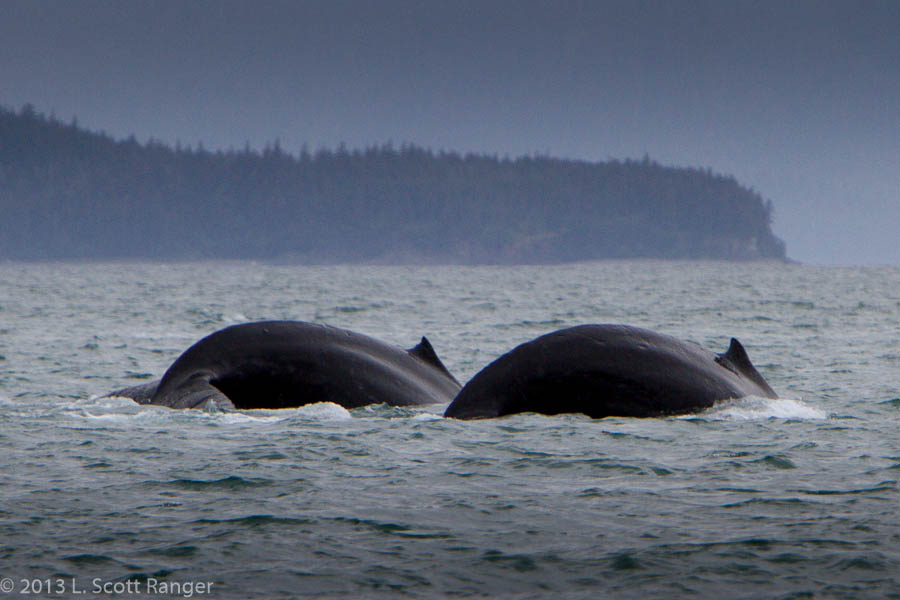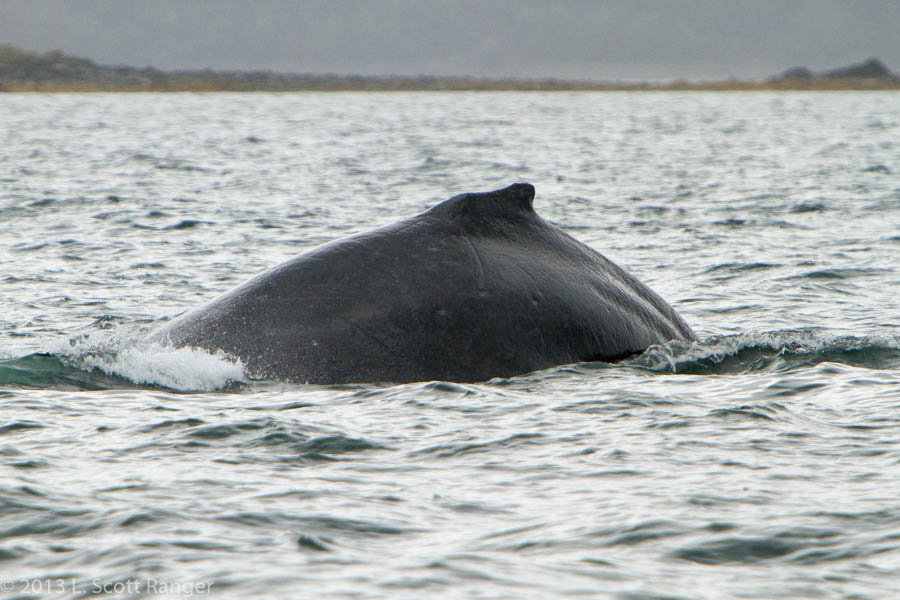This set of pages will include the humpback whales that I've seen and been able to photograph in the waters around Juneau, Alaska. It is a work in progress that expands as I have time and opportunity to work on it. I'd rather be out on the water watching these magnificent creatures!
Megaptera novaeangliae (Borowski, 1781), humpback whale
Taxonomic history
1756: The first name given to the humpback whales in a scientific setting was by Mathurin Jacques Brisson (1723-1806) from his Regnum Animale of 1756 calling it in his in native French baleine de la Nouvelle Angleterre with the English meaning “whale of New England”. It is not clear if he observed the animal here, but many of his era had, especially the whalers.
1781: Georg Heinrich Borowski (1746-1801), German naturalist and professor at the University of Viadrina in Frankfurt, converted Brisson’s French into the new form of naming in Latin invented by Carolous Linnæus in 1753 as Balaena novaeangliae Borowski 1781.
1804: Bernard Germain de Lacépède (1756-1825), French naturalist who was for a time the curator of reptiles and fishes at the Jardin des Plantes where he wrote Histoire naturelle des poissons, moved the whale from Balaenidae into the new family Balaenopteridae. This required that its genus be renamed so he created the name Balaenoptera jubartes Lacépède, 1804. Balaenoptera means “looks like a baleen whale” and jubartes is a French word for whale.
1846: John Edward Gray (1800-1875), Keeper of Zoology for the British Museum, determined the genus Balaena had whales different enough to warrant division. He created the new genus Megaptera and gave it the name Megaptera longipinna Gray, 1846. He left the bowhead and right whales in Balaena. The epithet means “long-feathers”, a curious misapplication of a Latin word.
1932: Remington Kellogg (1892-1969), naturalist and director of the United States National Museum reverted the name to Megaptera novaeangliae (Borowski, 1781) under the principle of priority using the oldest name. This is the currently accepted name.
The common name, humpback whale, is a bit misleading as the whale doesn't have a humped back! When sleeping, their backbone is nearly straight and only the rather small dorsal fin rises above it. When cruising the “hump” is slight at best and certainly not much different than any other whale. It is when the whale dives that it lives up to its name as it arches the back from the dorsal fin to the flukes in a mighty hump as it prepares to propel itself to the depths of the sea.
Megaptera novaeangliae (Borowski, 1781), humpback whale
Taxonomic history
1756: The first name given to the humpback whales in a scientific setting was by Mathurin Jacques Brisson (1723-1806) from his Regnum Animale of 1756 calling it in his in native French baleine de la Nouvelle Angleterre with the English meaning “whale of New England”. It is not clear if he observed the animal here, but many of his era had, especially the whalers.
1781: Georg Heinrich Borowski (1746-1801), German naturalist and professor at the University of Viadrina in Frankfurt, converted Brisson’s French into the new form of naming in Latin invented by Carolous Linnæus in 1753 as Balaena novaeangliae Borowski 1781.
1804: Bernard Germain de Lacépède (1756-1825), French naturalist who was for a time the curator of reptiles and fishes at the Jardin des Plantes where he wrote Histoire naturelle des poissons, moved the whale from Balaenidae into the new family Balaenopteridae. This required that its genus be renamed so he created the name Balaenoptera jubartes Lacépède, 1804. Balaenoptera means “looks like a baleen whale” and jubartes is a French word for whale.
1846: John Edward Gray (1800-1875), Keeper of Zoology for the British Museum, determined the genus Balaena had whales different enough to warrant division. He created the new genus Megaptera and gave it the name Megaptera longipinna Gray, 1846. He left the bowhead and right whales in Balaena. The epithet means “long-feathers”, a curious misapplication of a Latin word.
1932: Remington Kellogg (1892-1969), naturalist and director of the United States National Museum reverted the name to Megaptera novaeangliae (Borowski, 1781) under the principle of priority using the oldest name. This is the currently accepted name.
The common name, humpback whale, is a bit misleading as the whale doesn't have a humped back! When sleeping, their backbone is nearly straight and only the rather small dorsal fin rises above it. When cruising the “hump” is slight at best and certainly not much different than any other whale. It is when the whale dives that it lives up to its name as it arches the back from the dorsal fin to the flukes in a mighty hump as it prepares to propel itself to the depths of the sea.
There are many places to find more information on these creatures, but I recommend Juneau Humpback Whale Flukes as the first place for folks to go after reading my pages. Suzie Teerlink, of the University of Alaska Fairbanks Juneau campus in the School of Fisheries and Ocean Science, is my primary resource for all things humpback.
Humpback Whale Identification
Juneau Douglas High School biology teacher Charles Jurasz and his family spent a great deal of time on the waters of the Juneau area in the 1960's and noticed that they could identify individual whales by their tails. They began taking photographs of the tails in 1966 but it took some convincing of the established science community that this indeed could be done. His photograph of NMMLID 229 from 1972 was used to identify the same whale in the waters both of Maui and Alaska in 2006 making it the current record holder for the longest re-sighting time.
With totally unique flukes, tail photography is a sure way to document the location and identity of humpback whales over time. It has the great advantage of being completely harmless to the animal. It is also great fun!
With totally unique flukes, tail photography is a sure way to document the location and identity of humpback whales over time. It has the great advantage of being completely harmless to the animal. It is also great fun!


